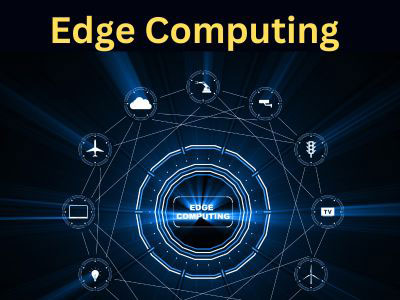Key Takeaway
Yes, a smartphone is considered an edge device. It processes data locally on the device, rather than sending all the data to a remote server or cloud.
Smartphones use edge computing to handle tasks like facial recognition, voice assistants, and real-time navigation. These tasks are processed locally, ensuring faster responses and improved efficiency.
Defining Edge Devices and Where Smartphones Fit
Edge devices are physical devices or machines that collect, process, and sometimes store data at the edge of a network, close to where the data is generated. These can range from sensors in manufacturing plants to cameras in smart homes, all of which help gather data and transmit it to edge servers for processing.
Smartphones, with their powerful processing capabilities, are also considered edge devices. They often process data locally, whether it’s through apps that perform facial recognition, analyze photos, or enable augmented reality experiences. Smartphones’ integration with edge computing has made them crucial players in the IoT ecosystem. As smartphones continue to evolve with better processing power, they will play an even more significant role in the edge computing landscape, enhancing the capabilities of various real-time applications.

Examples of Edge Computing Applications on Smartphones
Smartphones are perhaps the most familiar example of edge computing in action. They process data locally, allowing for quick app responsiveness and personalized experiences. For instance, voice assistants like Siri or Google Assistant rely on edge computing to interpret commands almost instantly, enhancing user experience.
Moreover, apps for photography leverage edge processing for real-time image enhancement. This flexibility allows smartphones to perform complex tasks without overwhelming cloud services. On-device capabilities ensure that user data remains private and secure.
For engineers, developing applications optimized for edge processing can lead to more efficient designs. Consider how applications can harness existing device capabilities to deliver enhanced user value. Insight into mobile edge computing will serve you well in a world leaning towards mobile solutions.
Understanding edge computing’s role in smartphones opens up opportunities for innovative app development.
You May Like to Read
Smartphones vs. Traditional Edge Devices
Smartphones and traditional edge devices share some similarities, especially in terms of their ability to process data locally. However, they serve different purposes and have distinct roles within the edge computing ecosystem. Smartphones are personal, multifunctional devices designed for communication, entertainment, and productivity. They feature powerful processors, cameras, GPS, and sensors, enabling them to handle a variety of tasks locally. In many cases, smartphones can act as edge devices, processing data from applications like navigation, fitness tracking, and augmented reality directly on the device.
Traditional edge devices, on the other hand, are typically purpose-built for specific tasks. These can include IoT sensors, industrial machines, and autonomous vehicles. Edge devices are designed to handle continuous, real-time data processing in industries such as manufacturing, healthcare, and transportation. Unlike smartphones, which are general-purpose, traditional edge devices are optimized for particular tasks, such as monitoring environmental conditions, controlling machinery, or analyzing sensor data.
How Smartphones Process Data Locally as Edge Devices
Smartphones have evolved into powerful edge devices capable of processing data locally without needing to rely heavily on cloud services. By leveraging edge computing capabilities, smartphones can run applications and perform tasks that traditionally required cloud-based processing, improving performance and user experience. This shift allows smartphones to operate more efficiently, with less dependency on network connectivity and faster response times.
For example, smartphones use edge computing for various features like facial recognition, augmented reality (AR), and real-time video processing. With the help of onboard AI processors, smartphones can analyze data such as images, videos, and sensor inputs in real time. In facial recognition, the phone processes the image locally to identify the user’s face, making the authentication process nearly instantaneous. Similarly, AR applications can overlay digital objects on the real world with minimal latency, providing a seamless and immersive experience for users.
Limitations of Smartphones in Edge Computing
While smartphones have become powerful edge devices with the ability to process data locally, they still have limitations in the context of edge computing. The primary limitation lies in the computational power and storage capacity of smartphones. Although smartphones have evolved to support AI and machine learning applications, they are still constrained by their processing capabilities compared to more specialized edge devices such as sensors or industrial equipment. As edge computing applications become more complex, smartphones may struggle to handle the demands of real-time data processing, particularly in resource-intensive environments like autonomous driving or industrial automation.
Another limitation is battery life. Processing data locally at the edge requires continuous power, and smartphones, which are designed for general-purpose use, often do not have the battery capacity to support prolonged edge computing tasks. This results in a trade-off between performance and power consumption, limiting the effectiveness of smartphones as edge devices for certain applications.
Smartphones also face challenges with connectivity. While they can process data locally, many edge applications require real-time interaction with other devices or cloud systems. Limited network coverage or unstable connectivity can hinder the effectiveness of smartphones in edge computing environments, particularly in rural or remote areas.
Conclusion
In conclusion, smartphones can function as edge devices, but they have limitations compared to more specialized edge hardware. While smartphones are capable of processing data locally, they are not as powerful as other dedicated edge devices, such as industrial sensors or IoT devices. Smartphones can handle less resource-intensive edge computing tasks, such as processing real-time data for location services or augmented reality applications. However, for more complex tasks that require greater processing power, smartphones may not be sufficient. Despite this, smartphones continue to play a significant role in edge computing, especially in consumer applications, and their capabilities will likely evolve as technology advances.
